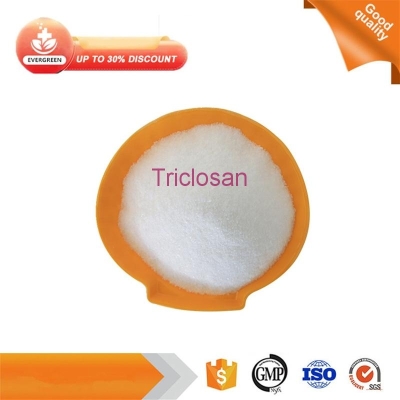-
Categories
-
Pharmaceutical Intermediates
-
Active Pharmaceutical Ingredients
-
Food Additives
- Industrial Coatings
- Agrochemicals
- Dyes and Pigments
- Surfactant
- Flavors and Fragrances
- Chemical Reagents
- Catalyst and Auxiliary
- Natural Products
- Inorganic Chemistry
-
Organic Chemistry
-
Biochemical Engineering
- Analytical Chemistry
- Cosmetic Ingredient
-
Pharmaceutical Intermediates
Promotion
ECHEMI Mall
Wholesale
Weekly Price
Exhibition
News
-
Trade Service
On November 1, Allis Pharmaceuticals announced that its third-generation EGFR inhibitor, vometinib mesylate, is a multi-center, randomized controlled, first-line treatment of locally advanced or metastatic non-small cell lung cancer (NSCLC) with sensitive EGFR mutations.
The double-blind phase 3 clinical study (FURLONG) reached the primary endpoint of progression-free survival (PFS)
.
It marks that the last third-generation EGFR inhibitor currently on the market is also about to undergo an NDA application for first-line treatment
.
What is an EGFR inhibitor
The results of multiple studies have confirmed that in non-selective Chinese non-small cell lung cancer (NSCLC) patients, the total mutation rate of EGFR is about 30%, the mutation rate of adenocarcinoma patients is about 50%, and the non-smoking adenocarcinoma can be as high as 60%~70.
%, and patients with squamous cell carcinoma still have an EGFR sensitive mutation rate of about 10% [1]
.
A large number of studies have shown that EGFR gene mutation status is the most important predictor of efficacy of EGFR tyrosine kinase inhibitor (EGFR-TKI) in the treatment of advanced NSCLC
.
Mutations usually occur in exons 18-21.
There are about five types of mutations, including point mutations in exon 18, deletion of exon 19, insertion of exon 20, point mutations in exon 20, and Point mutation in exon 21 (L858R)
Figure 1 Types of EGFR mutations and targeted therapy drugs
What are the domestic listed EGFR inhibitors
Since gefitinib was launched in China in 2004, there are currently 8 EGFR-TKIs for the treatment of non-small cell lung cancer (NSCLC) listed in China, of which 3 are innovative drugs of domestic companies
.
At present, the indications of ametinib for first-line treatment in the third-generation EGFR-TKI have also been declared for marketing
.
Table 1 Sources of EGFR inhibitor statistics: Yaozhi data, drug inserts
The price of domestic EGFR inhibitors is seriously inflated
EGFR inhibitors can be said to be one of the first small molecule inhibitors to enter medical insurance through negotiation.
Since AstraZeneca’s gefitinib and Beida’s icotinib negotiated to enter medical insurance in 2016, there have been 4 more EGFR inhibitors.
The agents negotiated successfully
.
The average drop in the first round of medical insurance negotiations for the six products reached 57.
75%
Gefitinib has gone through a round of centralized procurement after many generic drugs were launched, and the cumulative price reduction has reached 90%
.
Among the three generations of EGFR inhibitors, osimertinib has undergone a second contract renewal negotiation after adding first-line treatment indications, and the cumulative price reduction has reached 89.
4%.
With more and more new entrants and the impact of numerous generic drugs on the market after the expiration of imported drug patents, it is only a matter of time before the overall price of EGFR inhibitors continues to fall
.
And as the prices of listed drugs drop and benefit more patient populations, it will only be more difficult for latecomers to seize market space
.
Table 2 Sources of statistical data on price changes of EGFR inhibitors: Yaozhi data, list of medical insurance negotiations over the years, list of centralized procurement
Domestic EGFR research and development enthusiasm remains high
In an environment where many marketed drugs are scrambling to "suicidal" price cuts, there are still a large number of new varieties that are gradually established for research and development
.
Especially for the third-generation EGFR inhibitors, 11 varieties are still in the status of phase 1 clinical trials and approved clinical trials when 3 varieties have been applied for marketing and 4 varieties have been in phase 3 clinical trials, which greatly squeezes This has led to an unreasonable allocation of clinical resources
.
And when the third-generation EGFR market has matured, many companies still carry out the research and development of second-generation EGFR inhibitors.
There are only a few varieties that are targeted at rare mutations such as EGFR exon 20 insertion, filling the clinical gap
.
In view of the clinical gap after osimertinib resistance, only Zhengda Tianqing and Betta have new drug varieties under development, but they are both in the early clinical stage, and unmet clinical needs are waiting to be resolved
.
Figure 2 Analysis of domestic research and development of EGFR inhibitors
Table 3 Source of statistical data of EGFR inhibitors under domestic research: Yaozhi Data
With the rapid development of the pharmaceutical industry today, the previous Me too and Fastfollow R&D strategies have been unable to keep up with the overall market.
The price drop brought about by a round of medical insurance negotiations and centralized procurement has resulted in no bargaining power for newly listed drugs, and it is difficult to seize Market space
.
In the face of this situation, only when Beta and CP Tianqing, which started the development of four generations of EGFR inhibitors, face the clinical blank, it is possible to blaze a trail in the fiercely competitive market and enable domestic clinical resources to reach Reasonable and effective distribution
.
When will the domestic hot EGFR inhibitor research and development cool down? I believe the market will give the final answer
.
references:
references:[1] Expert consensus on molecular targeted therapy of advanced non-small cell lung cancer
[1] Expert consensus on molecular targeted therapy of advanced non-small cell lung cancer [2] Li R, Zhou X, Yao H, et al.
Four generations of EGFR TKIs associated with differentpathogenic mutations in non-small cell lung carcinoma[J].
Journal of Drug Targeting.
,DOI:10.
1080/1061186X.
2020.
1737934
Four generations of EGFR TKIs associated with differentpathogenic mutations in non-small cell lung carcinoma[J].
Journal of Drug Targeting.
,DOI:10.
1080/1061186X.
2020.
1737934







